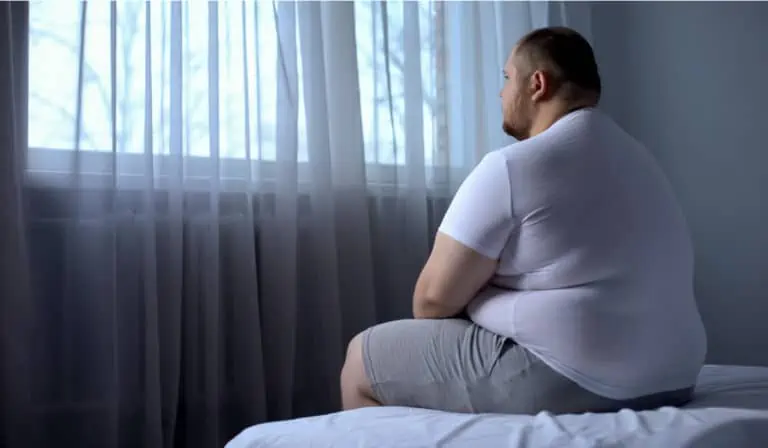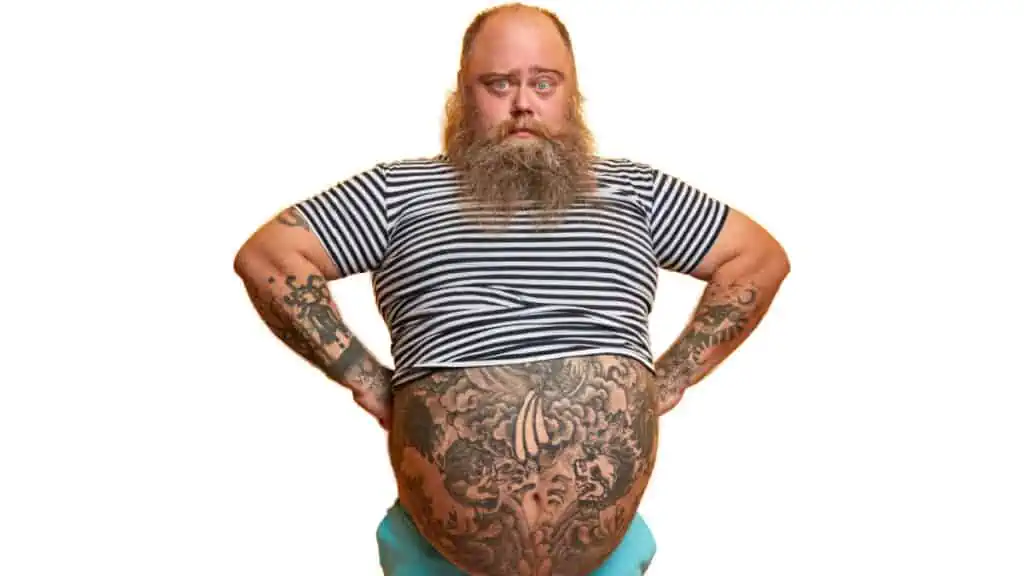As an Amazon Associate I earn from qualifying purchases.
If you have worn flip-flops most of your life or have had no need to wear socks, you might take the accessory for granted. But when you need to put effort into wearing one, you might see how important the ability to reach your feet is.
As a kid, I (obviously) had no trouble reaching my feet. However, as my weight (read: my belly) and lack of mobility started to catch up with me it got to the point that putting on my socks became a chore.
The way that things were progressing it seemed that it would soon be entirely impossible. So I decided to figure it out before it became a real issue.
After all, there is no way everyone wearing socks can reach their feet, so how do they put their socks on?
It turns out that most obese people just develop a “lasso” method and just struggle through it.
To put on socks if you are obese, you need to lasso the sock rim onto your toe unless you use a sock assistant device. Without it, the lassoing action is blindly executed with one hand until the obese person’s big toe catches the rim, then he wiggles his toes until all are in.
As I was already doing that, I figured I’d need a bit more assistance. However, if you’re not quite to that point yet, let’s talk about the “no-aid” method before we get to the tools available.
Method #1: The No-Assist Method
The no-assist method is the default way of wearing socks among fat guys. It is usually ditched once they find out about sock assistant devices.
The no-assist method features the following steps:
- Take a sock from its rim and pinch it while occupying a minimal area.
- Try to lasso your big toe into the rim on the opposite end. This can take a few tries, but no matter where the toe gets in, it does go to the opposite side from where you’re pinching.
- Repeat until your big toe catches the sock. This is crucial and time-consuming. Unless your big toe gets in, you can’t wear the sock
- Wiggle your toes until the next one is in. Another step that can take a few minutes.
- Repeat until all your toes are in the sock rim. Don’t pull too hard before every toe tip is inside the sock rim, or you’ll have the sock stuck between your toes.
- Pull until the sock is on. A very straightforward step that’s mentioned for the sake of technicality.
- Slide your foot into a slip-on shoe. Shoes worn by fat people are usually the slip-on kind (mine are at least).
The best part about this method is that you can try it right now – no supplies necessary. But aside from that, everything else about the no-assist method is a disadvantage:
- It works for some fat people only. Like fat people who are really that fat.
- It is time-consuming
- It can lead to a lot of frustration
- It can get messed up halfway through, requiring you to try again
Method #2 – Using a Sock Assistant Device
The second most common way for obese people to put their socks and shoes on is to use a device that keeps the sock rim open.
There are two versions of this device, so the specific steps can vary slightly.
- Load the sock on the device – This step requires taking the device in your hands and putting the sock on it. The sock should be placed such that if a foot were to slide in, the right side of the sock would be up.
- Place the device in the appropriate place – This is usually the floor, given that socks need to be worn on one’s feet.
- Pull up the device and the sock (or step into it) – There is a sock aid that requires you to pull the two skipping-rope-like ropes, and there’s one that simply stands holding the sock open so you can step in.
Best Sock Assistants for Obese People
Here are the two types of devices that you can use to put on a sock as a fat person:
- Truform Stocking Donner – This device helps women wear stockings without the hassle of picking out the wrinkles. It can also be used as a sock-donning device.
- RMS Deluxe Sock Aid – This sock-donning device is formulated specifically for fat people and requires less movement. It is Amazon’s best-rated device for this category.
Now that you know the options you have let’s cover what buying each one entails.
If you get the Stocking donner, the process for loading the sock will be a little clunky. But it doesn’t feel awkward to put on once the sock is loaded. If the sock is too tight, it might come off the donner, which can be problematic.
Some customers recommend using two grabbers to maintain a hold of the sock, but that’s using too many tools when the alternative is simpler.
If the person wearing the sock is seriously obese, the alternative option is better. The RMS Sock Aid is designed to allow plus-size individuals to wear socks with ease. You just need to place the device on the ground and use your big toe to locate the rim. The toughest part of putting on the sock is done by the sock aid.
The only drawback is that the action of pulling the aid using two ropes is unnatural and can cause embarrassment or shape. It is crucial to remember that weight-typicals use shoe horses all the time in order to fit their feet in shoes. Humans always take the assistance of different aids to do things that they cannot physically do. It is normal.
Best Shoes for Obese People
Now, let’s address how we wear shoes. I assume if you’re going to the trouble of putting socks on you’ll also want shoes.
Luckily, shoes aren’t nearly as difficult. Simply put a slip-on shoe in one corner of a room, feel for the shoe opening with your foot, and then slide your foot into the shoe. Most people who cannot afford (energy-wise) to wear laces simply opt for shoes that don’t have laces. Even if they get laced shoes, they get slip-ons that have decorative laces like boat shoes.
The best shoes for obese people (at least in my opinion) are Skechers Harper – Forde Loafers because they are available with a wide enough opening and have a lip at the back through which one can run a long thread to pull so the back of the shoes doesn’t remain under the ankle. As long as the shoe is wide enough, any person no matter how obese should be able to wear it.
If you don’t like this shoe, check out our full article on the best shoes for morbidly obese people.
Final Thoughts
Putting on your socks and shoes might be challenging if you’re obese, but you must stop trying to put them on without help.
If you need help with something that “normal people” don’t deal with, you should get said help. There’s no shame in using a tool to live a normal and fulfilling life…especially when it’s at home and no one knows.
In this case, it comes in the form of a sock aid and a slip-on with a lip at the back.








